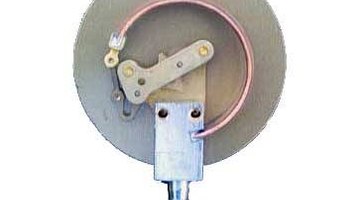How Pressure Gauges on Well Pumps Work
The pressure gauge is plumbed into the water line between the pressure tank and the pump, usually at the tank. The gauge itself mounts on a special fitting in the water line. The gauge itself has a dial with a needle that points to the current pressure reading in the tank. If there is no water at all in the line, the reading is zero.
Different types of gauges work on different principles, but a common type of water pressure gauge uses a hollow coiled tube inside the gauge, called a Bourdon tube. As water pressure increases, the tube tries to straighten out, or uncoil; when pressure coming through the fitting drops, the tube coils more tightly. As it coils or uncoils, it drives a gear linked both to the tube and to the gauge indicator needle, which moves around the dial according to the amount of pressure on the tube.
The Gauge


Working with the Pump
A pressure gauge is usually used in conjunction with a pressure switch, which activates when the dial reading on the gauge drops to a "cut-in" pressure. In most residential systems, this is a reading of 30 pounds per square inch (PSI). The pump kicks on and moves water from the well into the system, raising the pressure in the tank. When the gauge reading reaches 50 PSI, the pressure switch turns the pump off.



